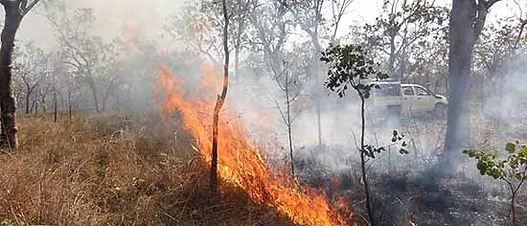Research
Check out this video created by graduate student Margie Knight in Planktos!

Our work in population ecology tends to focus on species interaction within some kind of environmental context (e.g., climate change, time-varying rainfall, or human interference). Examples include grass-tree interactions in savanna ecosystems, structural models of lethal and nonlethal harvest of African mahogany, social bee dynamics under the influence of pesticide stressors, and spatial dispersal of parasitoid wasps as they interact with their hosts.
Our research focuses on population ecology, epidemiology, and collective behavior with an emphasis on modeling, analysis, and computation (usually in Python).
Our epidemiological work focuses on the population-level dynamics of substance use disorder, especially opioids and alcohol, which exhibit social contagion dynamics while also developing in relative social isolation. Much of this work is currently conducted in collaboration with Oak Ridge National Lab and the US Department of Veterans Affairs (VA). We are also interested in social dynamics related to the early stages of large, pandemic-level outbreaks of infectious disease.
Finally, our collective behavior work takes place at the interface of computational fluid dynamics and population dynamics, with a focus on how small organisms interact with each other and their environment under the effects of non-trivial fluid flow. Examples include plankton capture by soft or rigid coral. This work is driven by an in-house software development project called Planktos that is funded by the National Science Foundation (NSF-DMS #2410988). We also conduct research on the collective behavior of locusts to better understand their swarming behavior as they forage for food.
Some Recent Publications
- Pearcy, Lenhart, Strickland (2024). Structural instability and linear allocation control in generalized models of substance use disorder. Mathematical Biosciences, 371, 109169.
- Elzinga, Strickland (2023). Generalized stressors on hive and forager bee colonies. Bulletin of Mathematical Biology, 85(122).
- Elzinga, Beckford, Strickland (2023). A mathematical model of the impacts of climate change on the winter tick epizootic in moose. Ecological Modelling, 483, 110421.
- Gross, McCord, LoRe, Ganusov, Hong, Strickland, Talmy, von Arnim, Wiggins (2023). Prioritization of the concepts and skills in quantitative education for graduate students in biomedical science. PLOS ONE, 18, 1-12.
- Hamlet, Strickland, Battista, Miller (2023). Multiscale flow between the branches and polyps of gorgonians. Journal of Experimental Biology, 266(5): jeb244520.
- Phillips, Gaoue, Lenhart, Strickland (2023). Modeling the effects of size-dependent harvesting strategies on the population dynamics of tropical trees. Mathematical Biosciences, 355, 108953.
- Strickland, Battista, Hamlet, Miller (2022). Planktos: An agent-based modeling framework for small organism movement and dispersal in a fluid environment with immersed structures. Bulletin of Mathematical Biology, 84(72).
- Phillips, Lenhart, Strickland (2021). A data-driven mathematical model of the heroin and fentanyl epidemic in Tennessee. Bulletin of Mathematical Biology, 83(97).
More listed at Christopher Strickland’s personal website.
Collaborator Websites
- Laura Miller (Math Physiology Lab at U Arizona)
- Nick Battista (Mathematical biologist specializing in computational fluid dynamics. Maintains the software package IB2d.)
- Patrick Shipman (Mathematical biologist specializing in pattern formation.)


